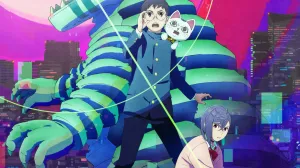Several seasons in, both Arrow and Supergirl seem to have changed the way they deal with their big bads — and it is working for a lot of fans.
Videos by ComicBook.com
According to executive producers on both shows, the changes are in the hopes of getting different reactions out of the audience than they have in the past.
“We designed it this way; all our storylines this year are very interwoven,” Supergirl EP Robert Rovner told ComicBook.com. “It might not seem that way now, but by our season finale you’ll understand how all roads lead to one conclusion, if that makes any sense….But we did want to tease it out, so that we were able to platform Agent Liberty and some of the other stories that we were beginning in the first group of episodes. We didn’t want the Red Daughter story to overshadow that, and we thought it was very intriguing to tease out her evolution. But we will eventually get her origin story, but we wanted to tease it out that way.”
In its seventh season, Arrow is taking a lot of chances and making a lot of big changes to the show. Its traditional flashbacks have been replaced with flash-forwards to a bleak future, and the traditional formula of a single big bad fighting Team Arrow for the whole season has been…well, if not outright replaced then at least modified, with Ricardo Diaz now in prison and Oliver and company facing a new battery of challenges.
The same is true for Supergirl. After fighting what sometimes felt like never-ending season-long battles with Astra, Rhea, and Reign over the first three seasons, Supergirl now finds herself facing down multifaceted threats from various opponents, none of whom could likely sustain a challenge against her for a full season.
Jessica Queller, who showruns Supergirl along with Rovner, added that the various plot threads play at different story beats but tie into a shared theme which will become more obvious as the season goes on.
“All the big bad dovetail, and as Robert said, are connected, so that was always a thread that was a mystery that we were excited about for the larger theme,” Queller said.
Arrow is a bit different, since its flashbacks often had a separate-but-related villain in the past…but putting together a Suicide Squad-style team of baddies in the Ghost Initiative under the ARGUS imprimatur and the command of John Diggle and Lyla Michaels would usually be enough of a challenge to feed six episodes of story. This time around, it is one of a half-dozen challenges facing Oliver as the season winds down. Some of these stories will play to the strengths and motivations of different characters, allowing Arrow‘s numerous heroes to each have their own “thing” going on, without dividing them into tribes like last season.
“I’ve been on the show since season one, and we’ve done all different types of storytelling,” Schwartz told ComicBook.com. “Last season, I felt like everyone was kind of on the same story, and for me, I feel like having everyone having different storylines, you can get a little bit deeper into the characters. Because we have such a large cast, it’s nice to have them more one-on-one than eight people in a scene at times.”
Both Supergirl and Arrow are coming back from their winter hiatus this week with new episodes. Supergirl‘s move to Sundays has worked out pretty well so far for the show and the network, as the series feels like a perfect lead-in to Charmed, which earned an expanded season due to its success. Arrow will now be paired with The CW‘s other more street-level superhero show, Black Lightning, on Monday nights while DC’s Legends of Tomorrow takes an extended hiatus and returns in April.








